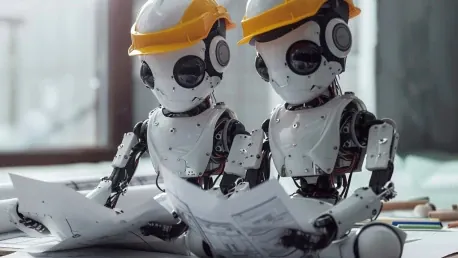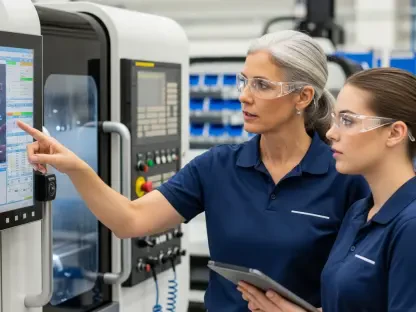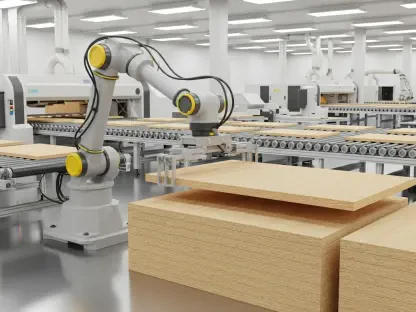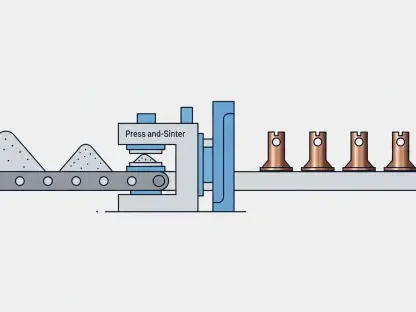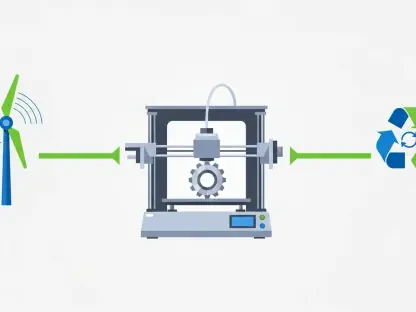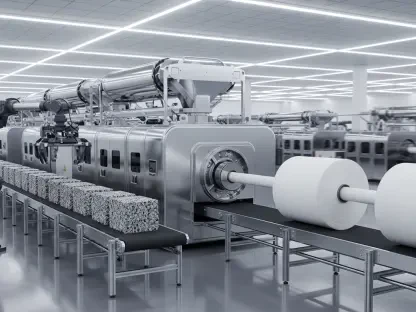The realm of factory automation has seen a significant transformation with the advent of autonomous robots. These self-driving machines, specifically Automated Guided Vehicles (AGVs) and Autonomous Mobile Robots (AMRs), have revolutionized manufacturing processes by enhancing efficiency, safety, and reliability. While consumer autonomous vehicles like Tesla’s Full Self-Driving feature are still in developmental stages, industrial robots have quietly amassed countless operational miles, proving their worth in controlled environments like factories. By incorporating AGVs and AMRs into their operations, manufacturers like Honda’s Marysville Auto Plant have been able to implement innovative solutions that streamline production lines and ensure a seamless workflow. Unlike public roads where consumer autonomous vehicles face numerous challenges, factories provide controlled settings that can be easily optimized for these robots. This technological leap promises a future where automated systems handle simpler tasks, thereby allowing human workers to focus on more complex and value-added functions that demand human touch and judgment.
The Rise of AGVs and AMRs in Manufacturing
In the world of industrial automation, AGVs and AMRs play pivotal roles. AGVs follow preprogrammed routes or physical guides such as tape on the floor, ensuring precise and consistent movement within the factory. On the other hand, AMRs exhibit more autonomy, adapting to their surroundings much like consumer robots such as autonomous vacuums. This distinction allows AMRs to navigate more complex environments, making them highly versatile in various manufacturing settings. The adoption of these robots is massive, with millions of units sold annually, far surpassing the sales of consumer autonomous vehicles. This widespread use underscores their reliability and efficiency in industrial applications. Factories like Honda’s Marysville Auto Plant have successfully integrated AGVs into their operations, particularly in the battery assembly line, where routes can be easily adjusted by modifying the guiding tape.
Using automation in this way has enabled manufacturers to ensure the precision and consistency of critical tasks without the need for continual human oversight. It also allows these factories to adjust their automated processes quickly and with minimal downtime. This effective integration of AGVs and AMRs into the manufacturing process highlights the progressive move towards an industry-wide reliance on robotic automation to meet the high demands of modern production lines.
Practicality in Controlled Environments
One of the key advantages of deploying autonomous robots in factories is the controlled environment. Unlike the unpredictable nature of public roads, factories can be optimized for AGVs and AMRs with minimal guidance systems such as painted lines, reflectors, or data matrix codes. This controlled setting allows for seamless operation and quick adjustments to improve efficiency.
For instance, Honda’s application of AGVs demonstrates how easily routes can be altered to enhance productivity. By simply adjusting the guiding tape, the factory can reconfigure the robots’ paths to meet changing production needs. This flexibility is a significant benefit, enabling manufacturers to adapt quickly to new demands without extensive reprogramming or infrastructure changes. The relatively stable and predictable environment of factories facilitates the successful implementation of these technologies, making it easier to maintain consistent production flows and address logistic challenges.
In factories, the reliance on pre-set paths and controlled settings helps minimize the common hurdles associated with outdoor autonomous operations, such as dealing with unexpected obstacles or people. This reduces the potential for errors and accidents, ensuring a safer and more efficient operational process. Controlled environments, therefore, function as ideal settings for testing and fine-tuning the capabilities of AGVs and AMRs, reinforcing their role as essential tools in modern manufacturing.
Addressing Job Displacement Concerns
A common concern associated with automation is the potential for job displacement. However, the reality in modern factories and warehouses is that automation is increasingly necessary to fill roles that human workers are either not available for or unwilling to take. This shift reflects a broader trend in the labor market, where the demand for reliable and consistent robots grows as human workforce availability decreases.
Brian Spradlin, president of Rocrich AGV Solutions, notes that the adoption of AGVs and AMRs has surged due to their dependability, despite the significant initial investment required. These robots not only fill labor gaps but also enhance overall productivity, allowing human workers to focus on more complex and value-added tasks. As automation continues to develop, it has become evident that robots are not replacing human workers but are instead working alongside them to create more efficient and productive environments.
Moreover, rather than eliminating jobs, automation is seen as shifting the type of work required from human employees. Robots handle repetitive, tedious tasks which are often unpopular among workers, resulting in a workforce that can engage in more meaningful, varied, and skilled labor. As AGVs and AMRs take on the heavy lifting and routine movements, human workers have more opportunity to engage in creative problem-solving and oversight roles, ensuring that the technology integrates smoothly into existing processes.
Enhancing Workplace Safety
Another critical advantage of autonomous robots is the improvement in workplace safety. Traditional machinery like forklifts is associated with various safety risks, including accidents caused by human error, fatigue, or distractions. Automated systems mitigate these risks by operating consistently and predictably, without the vulnerabilities of human operators.
At Honda’s Marysville plant, the declining reliance on forklifts illustrates this safety benefit. By replacing forklifts with AGVs and AMRs, the factory has reduced the likelihood of accidents, creating a safer work environment for all employees. This shift not only protects workers but also minimizes downtime and associated costs from workplace injuries. With the exposure to safety risks considerably lowered, factories can maintain a more steady and unhindered production flow, thus ensuring the continuity of operations.
Additionally, the safety protocols embedded within AGVs and AMRs include sensors and automatic shutoff mechanisms that prevent collisions with objects or people. This proactive approach to ensuring workplace safety reassures employees about the use of robots, leading to wider acceptance and smoother integration within the work environment. Therefore, by enhancing overall safety, these autonomous robots lay the groundwork for a more secure and productive industrial landscape.
Limitations and Human Judgment
Despite their many advantages, AGVs and AMRs have limitations, particularly concerning human judgment. These robots are designed to operate within their programmed parameters, making them highly efficient for repetitive and predictable tasks. However, situations requiring nuanced judgment, such as dealing with unexpected obstacles or changes in the environment, still necessitate human intervention.
This limitation highlights the complementary role of automation in manufacturing. While robots can handle routine tasks with precision, human workers are essential for overseeing operations, making critical decisions, and addressing unforeseen challenges. This synergy between humans and robots is key to maximizing the benefits of automation. Balancing automation with human intervention ensures that while robots enhance operational efficiency, human expertise remains integral to navigating complex, unpredictable scenarios.
However, it’s crucial to recognize that ongoing advancements in machine learning and artificial intelligence are fostering improvements in how AGVs and AMRs perform. Development trends suggest that future generations of autonomous robots will become increasingly capable of handling diverse tasks and responding to dynamic changes. Despite these technological advancements, the essence of human judgment remains indispensable in ensuring successful outcomes and seamless production processes within the factory environment.
Future Prospects for Autonomous Robots
The world of factory automation has undergone a significant transformation with the introduction of autonomous robots. These self-navigating machines, such as Automated Guided Vehicles (AGVs) and Autonomous Mobile Robots (AMRs), have elevated manufacturing processes by boosting efficiency, safety, and reliability. While consumer autonomous vehicles like Tesla’s Full Self-Driving feature are still being perfected, industrial robots have been quietly clocking innumerable operational miles, proving their value in factory environments. Companies, including Honda’s Marysville Auto Plant, have adopted AGVs and AMRs into their operations, introducing innovative solutions that streamline production and maintain a seamless workflow. Factories offer controlled environments where these robots operate at their best, unlike public roads where consumer autonomous vehicles face various challenges. This technological advancement heralds a future where automated systems handle routine tasks, freeing human workers to focus on more complex, value-added activities that require human intuition and judgment. Factories are thus optimized for robotic efficiency, bridging the gap until consumer autonomous vehicles catch up.
